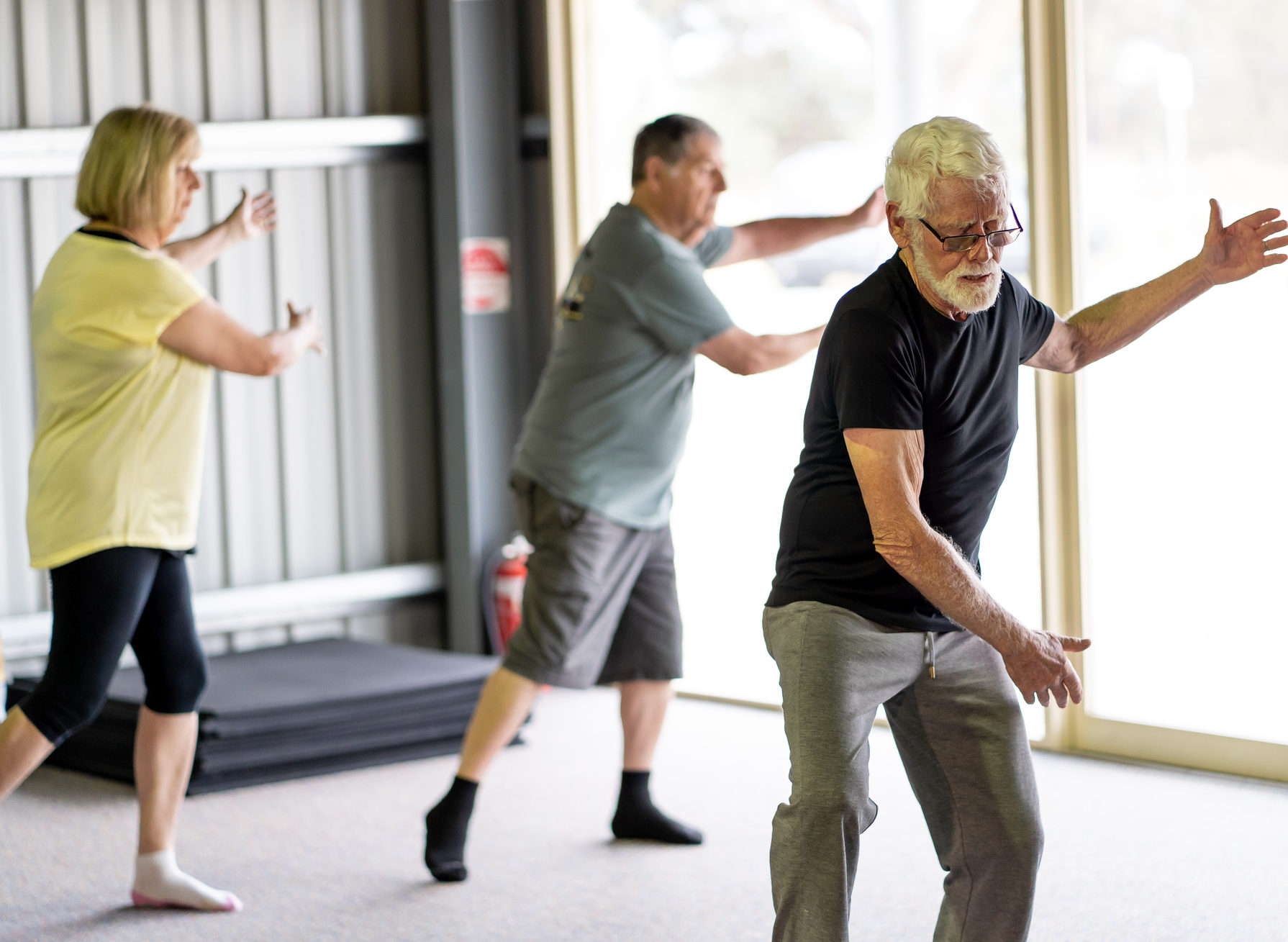
You’ve probably seen them as you drive by a park or walk through the halls of a community center: a group of people moving together slowly from pose to pose. As they move, they may change their stance, or the positions of their arms and legs. These folks are probably performing the motions of tai chi, which is gaining in popularity in the U.S.
What is tai chi?
Tai chi is a body awareness practice that originated in China as a martial art. It is sometimes called “moving meditation,” as the goal is to increase awareness of one’s body in space. Traditionally, tai chi practitioners speak of the concepts of yin and yang and a life force called qi, but whatever your beliefs, the actual physical practice of tai chi can be a good part of a fitness routine. The goal is to concentrate and to put aside distracting thoughts, to achieve a balance between relaxation and focus.
Tai chi is often practiced in groups, but once trained, people can also do it alone. Many practitioners enjoy a morning tai chi session in a park or other outdoor place when the weather is nice.
What are the benefits?
Tai chi is gentle on the joints, requires no equipment, and can be performed at home or in a free or inexpensive class. After a tai chi session, many people report feeling a spiritual lift that improves mood and provides a sense of well-being for the rest of the day. They might also sleep better. Tai chi has been found to be beneficial for people who are suffering from a number of health challenges, as well:
Falls. Many fall prevention programs today include tai chi in the exercise portion of the training. According to The American College of Rheumatology, tai chi can improve posture, balance, proprioception (the sense of position) and coordination. Research from the American Academy of Physical Medicine and Rehabilitation pointed out that tai chi reduces the risk of falls by decreasing the fear of falling through increased self-confidence. Other benefits that can help prevent falls include improved strength and flexibility.
Arthritis. A study conducted at Tufts University New England Medical Center found that osteoarthritis patients who engaged in regular tai chi sessions experienced improved physical function and decreased pain. The study noted that the physical components of tai chi are consistent with exercise recommendations for arthritis, which include range-of-motion, muscle conditioning and aerobic workout. What’s more, the mental element of tai chi can trigger the release of endorphins, the body’s own pain relievers.
Depression. Researchers from the UCLA Department of Psychiatry and Biobehavioral Sciences confirmed that tai chi can be effective in fighting depression in people of every age. And for some people, tai chi might offer benefits that rival prescription antidepressant drugs, which can cause negative side effects or undesirable interactions with other medicines.
Studies also show tai chi can be beneficial for people with Parkinson’s disease, heart disease, Alzheimer’s and stroke. Tai chi can also be a great fitness activity for people who use a wheelchair.
Is tai chi safe?
Tai chi is considered to be generally safe. People with osteoporosis, joint problems, hernia, injuries or other medical conditions also should talk to their healthcare provider before starting tai chi. It may be best to begin with the help of an instructor to be sure you’re performing the movements correctly.
The information in this article is not intended to take the place of your healthcare provider’s advice. Talk to your doctor before beginning tai chi or any exercise program.


